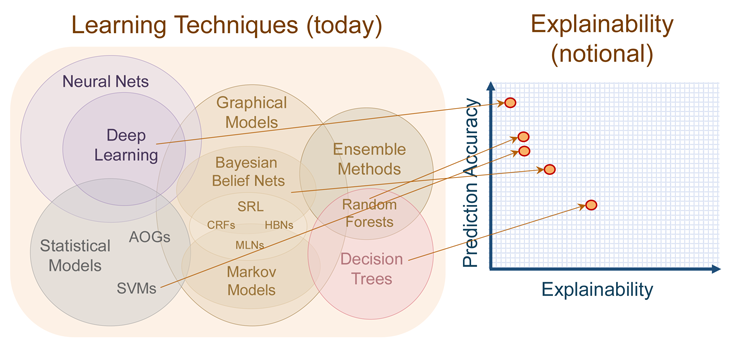Kate Crawford & Ryan Calo, There is a blind spot in AI research , Nature
We believe that a fourth approach is needed. A practical and broadly applicable social-systems analysis thinks through all the possible effects of AI systems on all parties. It also engages with social impacts at every stage — conception, design, deployment and regulation.
researchers … need to start investigating how differences in communities’ access to information, wealth and basic services shape the data that AI systems train on.
Domingos, P. The Master Algorithm: How the Quest for the Ultimate Learning Machine Will Remake Our World (Allen Lane, 2015):
“People worry that computers will get too smart and take over the world, but the real problem is that they’re too stupid and they’ve already taken over the world.”
Is Artificial Intelligence Permanently Inscrutable?
The European Union recently proposed to establish a “right to explanation,” which allows citizens to demand transparency for algorithmic decisions.
… Even if it were possible to impose this kind of interpretability, it may not always be desirable. The requirement for interpretability can be seen as another set of constraints, preventing a model from a “pure” solution that pays attention only to the input and output data it is given, and potentially reducing accuracy.
… Yosinski, for example, says he is trying to understand deep networks “in the way we understand animals, or maybe even humans.”
… Thompson was surprised, however, to discover that the circuit used fewer components than any human engineer would have used—including several that were not physically connected to the rest, and yet were somehow still necessary for the circuit to work properly.
He took to dissecting the circuit. After several experiments, he learned that its success exploited subtle electromagnetic interference between adjacent components. The disconnected elements influenced the circuit by causing small fluctuations in local electrical fields. Human engineers usually guard against these interactions, because they are unpredictable. Sure enough, when Thompson copied the same circuit layout to another batch of components—or even changed the ambient temperature—it failed completely.
The circuit exhibited a hallmark feature of trained machines: They are as compact and simplified as they can be, exquisitely well suited to their environment—and ill-adapted to any other. They pick up on patterns invisible to their engineers; but can’t know which of those patterns exist nowhere else. Machine learning researchers go to great lengths to avoid this phenomenon, called “overfitting,” but as these algorithms are used in more and more dynamic situations, their brittleness will inevitably be exposed…
Non-human actors in our home, that we’ve selected personally and culturally. Designed and constructed but not finished. Learning and bonding. That intelligence can look as alien as staring into the eye of a bird (ever done that? Brrr.) or as warm as looking into the face of a puppy. New nature.
The smart bots are coming and this one is brilliant
The way Mortensen sees it, there will be two classes of digital assistants, the broad and the specific, or as it he calls it, “horizontal and vertical AI.”
The next hot job in Silicon Valley is for poets
As tech behemoths and a wave of start-ups double down on virtual assistants that can chat with human beings, writing for AI is becoming a hot job in Silicon Valley.
Why Do I Have to Call This App ‘Julie’?
And why does artificial intelligence need a gender at all?
Contrary to the more fantastic predictions for AI in the popular press, the Study Panel found no cause for concern that AI is an imminent threat to humankind. No machines with self-sustaining long-term goals and intent have been developed, nor are they likely to be developed in the near future. Instead, increasingly useful applications of AI, with potentially profound positive impacts on our society and economy are likely to emerge between now and 2030, the period this report considers. At the same time, many of these developments will spur disruptions in Substantial increases in the future uses of AI applications, including more self-driving cars, healthcare diagnostics and targeted treatment, and physical assistance for elder care can be expected. 5 how human labor is augmented or replaced by AI, creating new challenges for the economy and society more broadly. Application design and policy decisions made in the near term are likely to have long-lasting influences on the nature and directions of such developments, making it important for AI researchers, developers, social scientists, and policymakers to balance the imperative to innovate with mechanisms to ensure that AI’s economic and social benefits are broadly shared across society. If society approaches these technologies primarily with fear and suspicion, missteps that slow AI’s development or drive it underground will result, impeding important work on ensuring the safety and reliability of AI technologies. On the other hand, if society approaches AI with a more open mind, the technologies emerging from the field could profoundly transform society for the better in the coming decades.
Tech TalkAt WorkTech Careers Computer Vision Leader Fei-Fei Li on Why AI Needs Diversity
“No matter what data we look at today, whether it’s from universities or companies, we lack diversity,”


